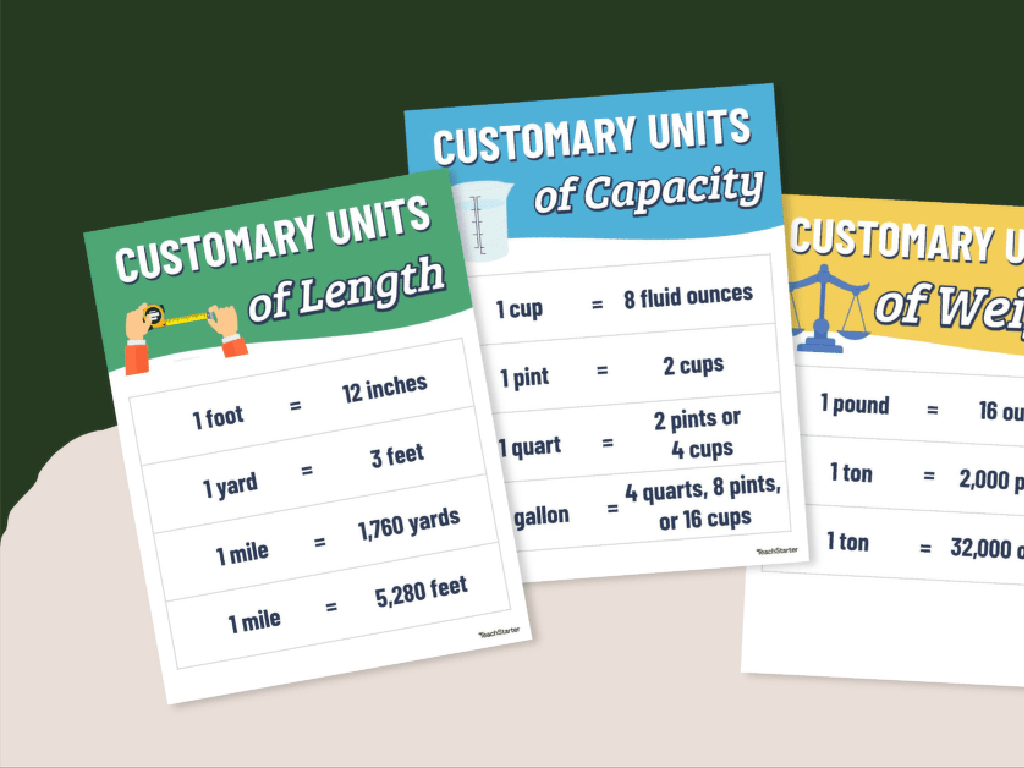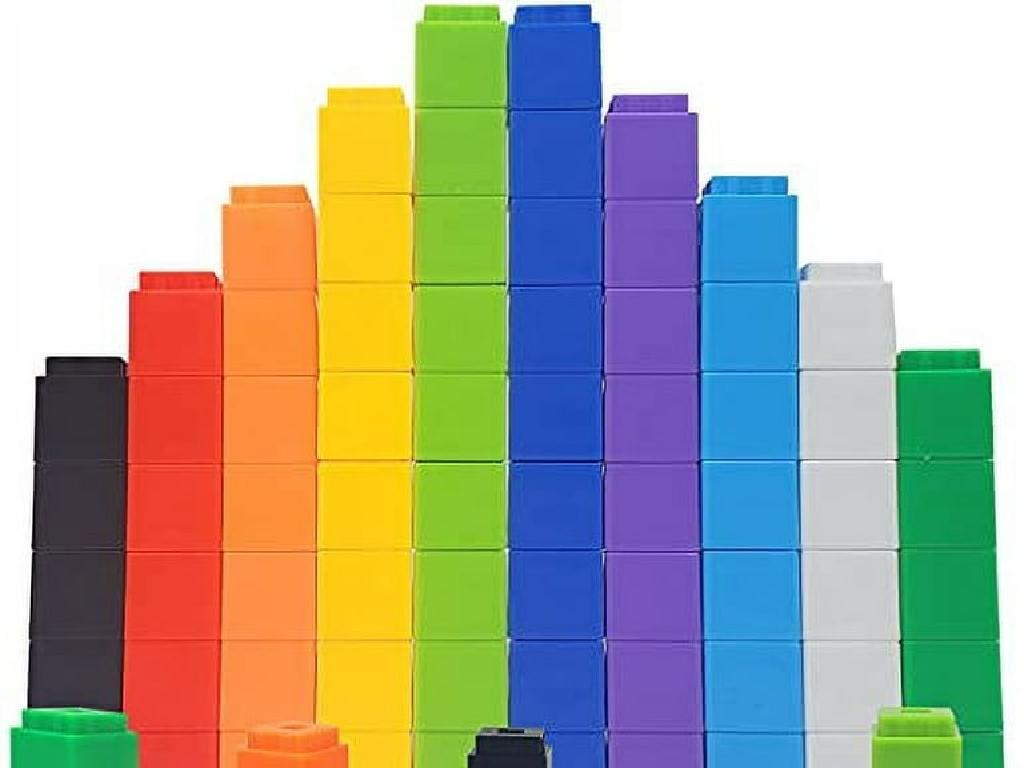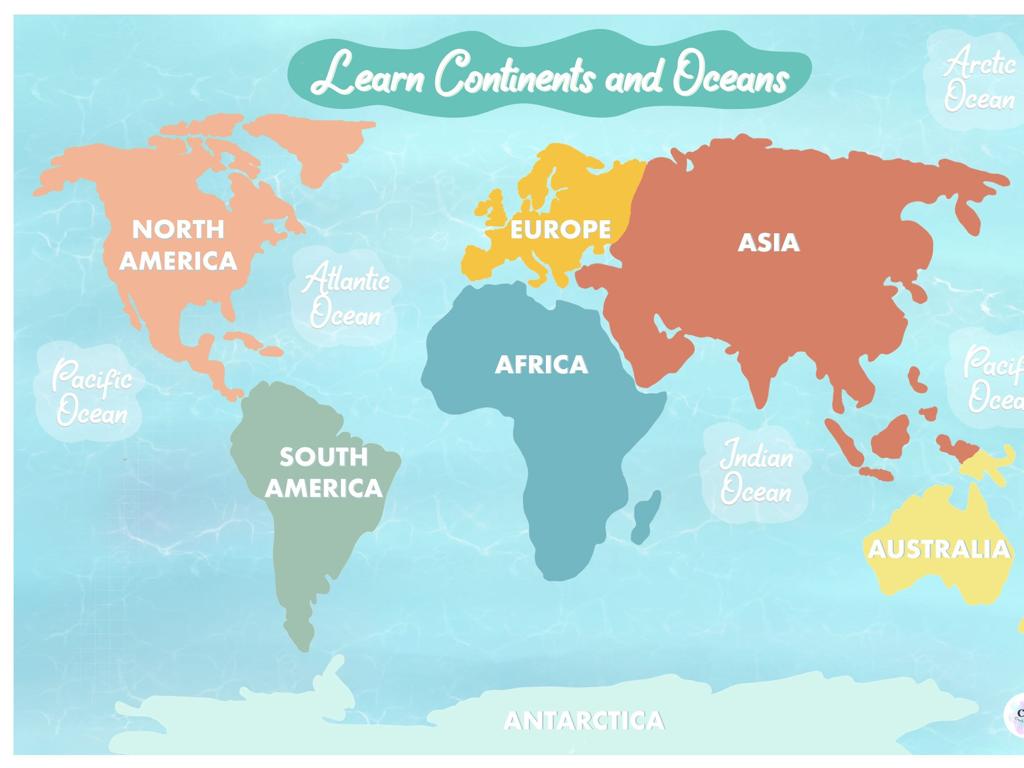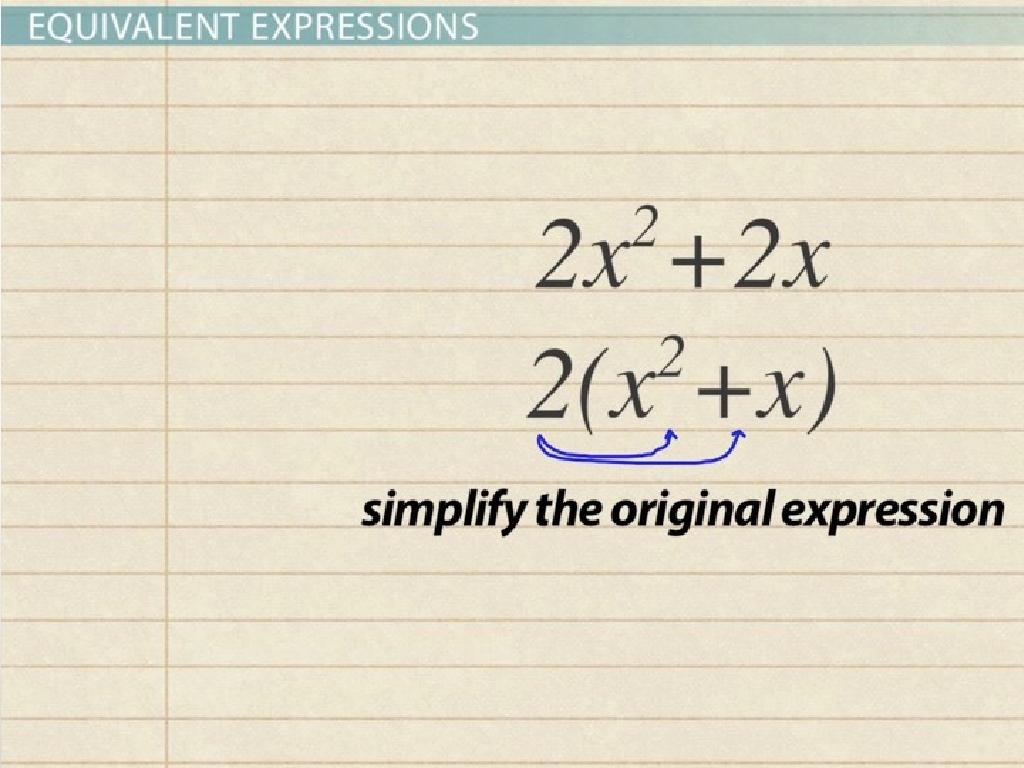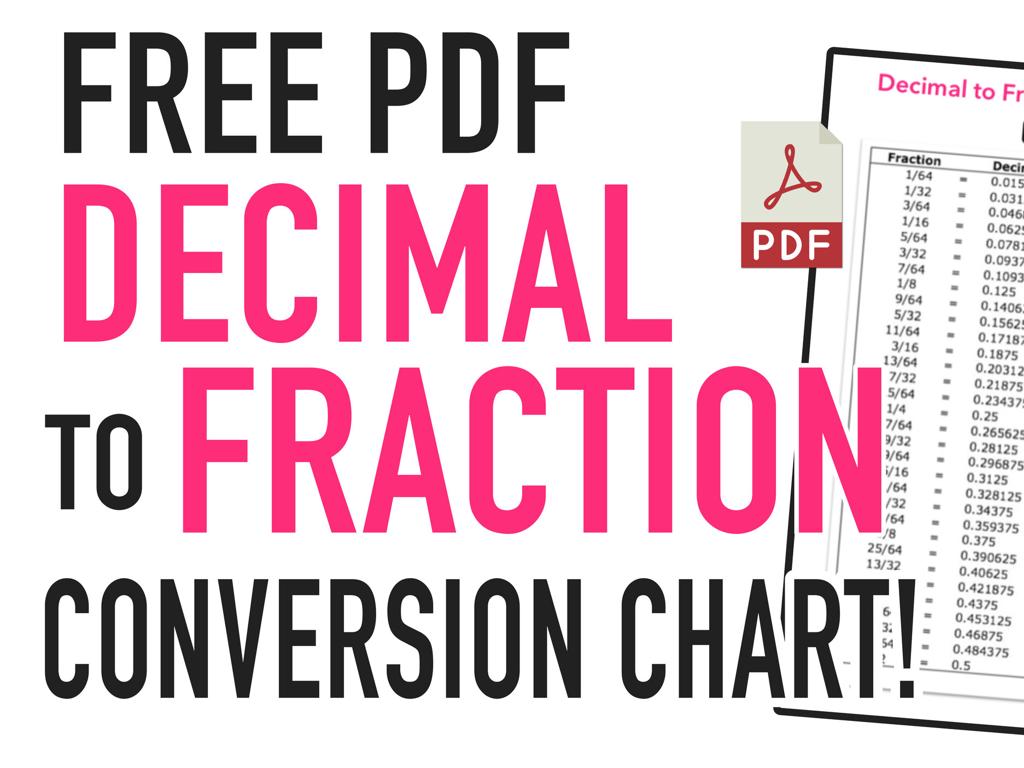Convert Between Customary And Metric Systems
Subject: Math
Grade: Sixth grade
Topic: Units Of Measurement
Please LOG IN to download the presentation. Access is available to registered users only.
View More Content
Understanding Measurement Systems
– Explore measurement systems
– Learn about customary and metric units
– Importance of both systems
– Knowing both is essential for global competence
– Converting between systems
– Use conversion formulas for accuracy
– Real-world application
– Apply conversions in cooking, travel, and science
|
This slide introduces students to the concept of different measurement systems, specifically the customary system used primarily in the United States and the metric system used internationally. Emphasize the importance of understanding both systems as it is crucial for students to be globally competent and able to communicate measurements in a variety of contexts. Teach students the basic conversion formulas and provide practice problems to apply these conversions. Highlight real-world applications such as cooking, where recipes may use different units, or in science, where the metric system is standard. Encourage students to think of situations in their lives where they might need to convert measurements, such as when traveling to a country that uses a different system.
Understanding the Customary System
– Customary system units of length
– Inches, feet, yards, and miles measure length
– Units for weight explained
– Weight is measured in ounces, pounds, and tons
– Volume units in the customary system
– Volume measured in teaspoons, tablespoons, cups, pints, quarts, gallons
– Converting between customary units
– Learn to convert, like 3 feet equals 1 yard
|
This slide introduces the customary system of measurement, which is primarily used in the United States. Start by explaining the units of length (inches, feet, yards, miles) and ensure students can identify when to use each. Then, discuss weight measurements, including ounces, pounds, and tons, and give examples of objects that might weigh in these units. Next, explore volume units, from teaspoons up to gallons, and provide everyday examples for each (like a teaspoon of sugar or a gallon of milk). Finally, teach students basic conversions within the customary system, such as 12 inches in a foot or 16 ounces in a pound. Use visual aids and interactive activities to reinforce these concepts.
Understanding the Metric System
– Introduction to metric lengths
– Millimeters, centimeters, meters, kilometers
– Metric units for weight
– Milligrams, grams, kilograms
– Metric units for volume
– Milliliters, liters
– Converting within the metric system
– Use conversion factors to switch between units
|
This slide introduces the metric system, which is used worldwide for scientific and everyday measurements. Start by explaining the basic units of length in the metric system, from smallest to largest (millimeters to kilometers), and show how they are used in everyday contexts. Then, discuss the units of weight, emphasizing the relationship between milligrams, grams, and kilograms. Next, explore the units of volume, with examples of milliliters and liters. Conclude by teaching students how to convert between these units using multiplication or division, and provide examples for practice. Emphasize the importance of understanding these conversions for real-world applications, such as cooking, science experiments, and travel.
Understanding Measurement Systems
– Historical origins of measurement
– Different cultures developed their own units, like feet and meters.
– Countries and their measurement systems
– The USA uses customary, while most others use metric.
– Versatility in using both systems
– Being skilled in both systems is valuable for travel, science, and trade.
– Why it matters in a global context
|
This slide aims to explain the existence of different measurement systems due to historical development, with various cultures creating units based on what was available to them. Highlight that the United States primarily uses the customary system, while the metric system is used internationally. Emphasize the importance of understanding both systems to navigate a global environment effectively, especially in fields like science, engineering, and international trade. Encourage students to think about situations where they might need to convert measurements, such as cooking, traveling, or working on international projects.
Conversion Basics: Customary and Metric Systems
– Learn conversion factors
– A conversion factor is a number used to change one set of units to another, by multiplying or dividing.
– Multiply & divide in conversions
– To convert units, multiply by the conversion factor if you are moving to a larger unit, and divide if you are moving to a smaller one.
– Examples: systems conversion
– Convert inches to centimeters, pounds to kilograms, etc.
– Practice with simple examples
|
This slide introduces the fundamental concepts needed to convert between the customary and metric systems. Emphasize the importance of understanding conversion factors, which are the keys to changing one unit to another. Demonstrate the process of multiplication or division in unit conversions, depending on whether the conversion is to a larger or smaller unit. Provide simple, relatable examples such as converting inches to centimeters or pounds to kilograms to solidify understanding. Encourage students to practice these conversions with straightforward examples to build their confidence before moving on to more complex problems.
Converting Units: Hands-On Examples
– Length conversion example
– Convert 5 feet to meters using the conversion factor 1 ft = 0.3048 m
– Weight conversion example
– Convert 8 pounds to kilograms using the conversion factor 1 lb = 0.453592 kg
– Volume conversion example
– Convert 3 gallons to liters using the conversion factor 1 gal = 3.78541 L
|
This slide is designed as a class activity to help students understand the process of converting between customary and metric units. Start with a length conversion, demonstrating how to multiply the given value by the conversion factor. Next, move on to weight, showing the conversion from pounds to kilograms. Lastly, explain volume conversion from gallons to liters. For each example, work through the problem step by step, ensuring students grasp the concept of using conversion factors. Provide additional practice problems for students to try individually or in groups, and be ready to assist anyone who needs help. Possible activities include measuring classroom objects, weighing items, and comparing liquid volumes to reinforce the conversions.
Conversion Practice Activities
– Work on individual problems
– Pair up and compare answers
After solving, explain your method to a partner.
– Discuss answers as a class
We’ll review different methods used for conversions.
– Understand conversion concepts
This will help solidify your understanding of unit conversions.
|
This slide outlines the structure of the class activity focused on practicing conversions between customary and metric systems. Begin with individual practice where students solve a set of conversion problems on their own to apply the concepts they’ve learned. Next, have them pair up with a partner to compare their answers and discuss any discrepancies, fostering peer learning. Follow this with a group discussion to review the answers as a class, allowing students to see various methods of solving the problems. This activity is designed to reinforce their understanding of unit conversions through practice and collaboration. For the teacher: Prepare a diverse set of conversion problems, ensure students have conversion tables handy, and encourage them to use different strategies to find the solutions. Possible activities could include converting lengths from inches to centimeters, volumes from gallons to liters, and weights from pounds to kilograms.
Class Activity: Measurement Scavenger Hunt
– Find classroom items to measure
– Measure using customary and metric units
– Record and convert measurements
– For example, if a pencil is 7 inches, what is that in centimeters?
– Discuss findings with the class
|
This interactive activity is designed to help students apply their knowledge of measurement conversion in a fun and engaging way. Students will search for items in the classroom and measure them using both customary and metric units. They will then record these measurements and work on converting between the two systems. This will help reinforce their understanding of the differences between these systems and the conversion process. After the activity, students will discuss their findings with the class, allowing them to share their experiences and learn from each other. Possible items to measure could include a book, a desk, a piece of paper, or a window. Ensure that each student has access to a ruler with both customary and metric units. Provide conversion charts if necessary.
Lesson Recap & Homework
– Review today’s key concepts
– Complete the conversion worksheet
– Worksheet includes problems on converting between customary and metric units
– Measure and convert home items
– Use a ruler or tape measure for household objects, then convert the measurements
– Practice makes perfect
|
As we conclude today’s lesson on converting between customary and metric systems, it’s important to reinforce the knowledge through practice. Assign the provided conversion worksheet for homework to solidify their understanding of the concepts. Additionally, encourage students to find items around their home to measure. They can use a ruler or tape measure to find the length, width, or height of objects and then convert those measurements between systems. This practical exercise will help them grasp the real-world application of the lesson. Remind them that consistent practice is key to mastering conversions.

